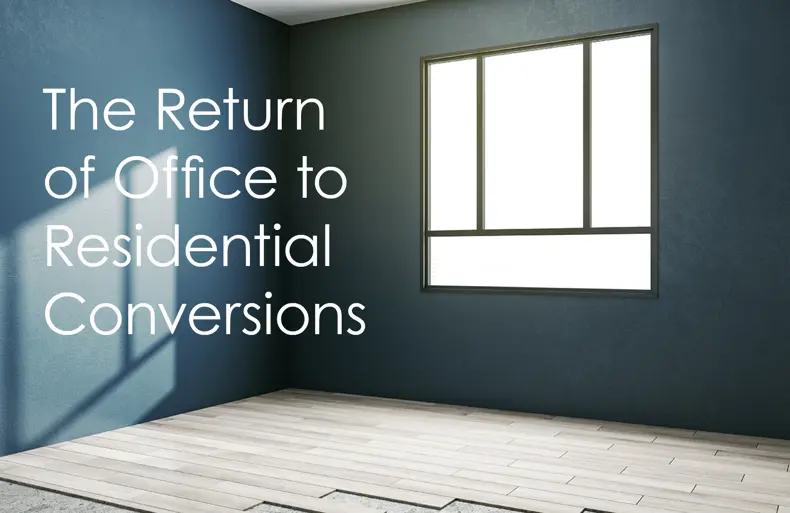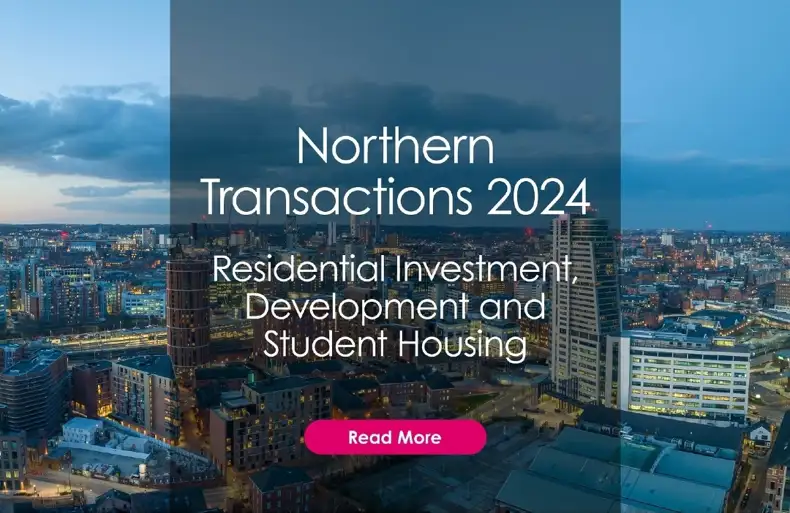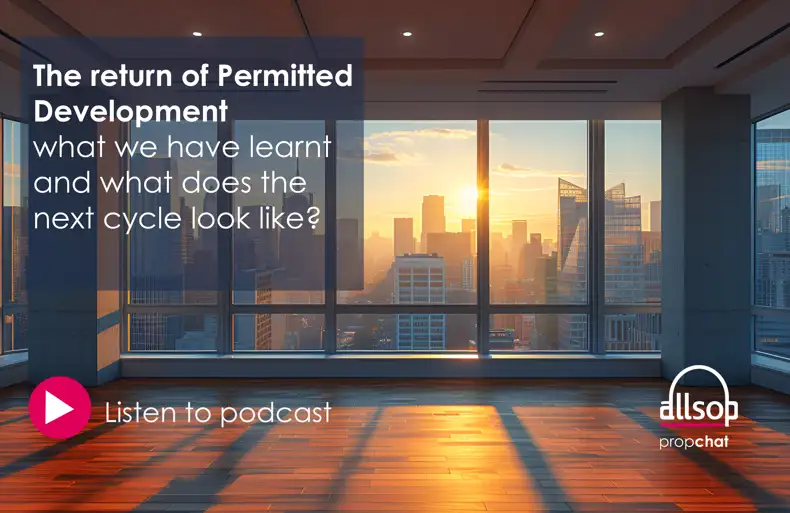Blog | Development and Land | Permitted Development | Residential Development Consultancy | Z 2024 All June
The Return of Office to Residential Conversions - What does this Cycle Look Like?

It took longer than expected (the consultation concluded in September ’23), but Permitted Development (PD) on a large scale is back. From the 5th March, the requirement for vacancy and the threshold of 1,500 sq m has been removed. So what do we expect to see and how will it be different to previous iterations?
It is worth casting our minds back 11 years to 2013, to a time when the impacts of the Global Financial Crisis were being acutely felt and the planning system was failing. A stimulus was desperately needed to address the figure of only 125,000 new homes delivered in 2012/13, well short of the much touted 300,000 government figure.
In the absence of the ability to address structural changes in the planning system and outdated planning policy, we saw the advent of office to residential permitted development. There have been many articles highlighting the journey from “O” to “MA” and the amendments from 2013 through to now, as well as those focussing on the stigma of conversions around lack of daylight, office park and industrial locations and compromised unit sizes.
With many of these issues being addressed, what does this next cycle look like and how will this generation of PD buildings differentiate itself from the past?
Having no upper limit on the scale of conversions has provided a lifeline to many secondary office markets that were languishing following changing working practices and a work from home culture. Yes, many could have been converted by obtaining planning permission but, with major delays and high requirements for affordable housing, the viability of funding the applications and the scheme as a whole were questionable.
Permitted Development provides the opportunity, in theory, to get a quick prior approval (56 days) provided that the requisite supporting information is submitted. The benefit to developers is that Local Authorities, in determining these applications, cannot stray beyond the legislation and require further information, thus keeping a narrow focus to determination in what are often very politicised scenarios.
The previous supporting information required on flooding, transport and contamination has been bolstered to include noise impacts from surrounding uses and fire safety regulations amongst other factors. This follows previous amendments in 2020/21, which required compliance with the prescribed space standards and the need for adequate natural light.
In contrast to a planning application, even with the additional documentation, this will create the opportunity to achieve a quick outcome if Local Authorities determine in accordance with the legislation. The broader suite of supporting information does, however raise further areas of scrutiny.
Already there are some key battlegrounds emerging including; what is sufficient natural light and how is it measured? What are adequate levels of car parking? How do you quantify the impact of adjoining commercial uses?
With fire safety regulations, and the associated gateways that developments need to adhere to, there will be inevitable building regulation negotiations required both in relation to those properties over 18 metres, but also those where façade materials raise concerns.
The legislation requires that developments are completed within a three year period, these building regulation delays and any constraints to achieving vacant possession will quickly eat in to that timeframe.
Of course, even before the potential to achieve prior approval any purchaser or current owner, will need to understand whether an Article 4 Direction exists that would preclude the ability to change use under the legislation. Many such designations emerged in 2015 in response to the loss of offices that had occurred and they do remain in existence.
Local Authorities who had not pursued the Article 4 Directions in certain major office locations are now trying to consult and impose restrictions, caught by the fact the upper limit had previously been set at 1,500 sq m in the legislation. There are definitely windows of opportunity around their imposition but also on a macro level, how might the situation change with the likelihood of a Labour Government in the autumn?
Previous statistics around PD delivery vary but suggest 10,000 - 15,000 new units per annum in the 2015-22 period. With a government focussed on the 300,000 new homes figure, is there a place for PD alongside the “greybelt” and other sources?
With the challenges of the office market undeniable and the ESG / re-utilisation of buildings a key environmental consideration, it feels like PD won’t be dispensed with. The more pertinent question with the Labour Party’s stated priority around the delivery of affordable housing, is whether the legislation is amended to capture either on-site provision or a payment in lieu of doing so?
With a private member’s bill at second reading stage, which focuses on planning obligations relating to affordable housing in respect of the conversion of commercial to residential, time is very much of the essence in maximising the saleability of these types of asset.
The starting gun has fired on the cycle and it will be familiar; the sale of buildings (with or without prior approval); buildings bought unconditionally flipped with prior approval for change of use and additional storeys; and then the delivery of units for sale, or hold (will PD become institutional grade investment?), as we have survived until 2025.
One thing is for certain, a better type of product in more appropriate locations will emerge this time compared to what we saw almost a decade ago. High quality PD conversions undertaken by specialist developers have emerged in recent years and formed an important part of the residential investment and sales market. As we know with development and planning, there will be plenty of twists and turns before many of these buildings reach the end product stage!
Related Insights

Northern Residential Property Transactions 2024 & Market Update
Take a look at the properties we sold in 2024 and read our market updates.

Allsop appoints senior land & development specialist bolstering residential and living team
Allsop has appointed Hugh Bushell as Senior Associate to its Residential Transactional and Living Markets (RTLM) team.

The Developing Relationship between Traditional Housebuilders and Single-Family Housing Investors
Looking forward there is a palpable sense of optimism within the industry. Despite the challenges that have arisen, particula...

Podcast: The return of Permitted Development – what we have learnt and what does the next cycle look like?
In this podcast episode we discuss the legislative changes to “PD” in early March. We reflect on how it has evolved to provid...